Hollow installation by Zeller & Moye and Katie Paterson brings together 10,000 tree species
Architects Zeller & Moye and artist Katie Paterson have installed a public artwork in the grounds of Bristol University, England, which is made up of samples from more than 10,000 tree species.
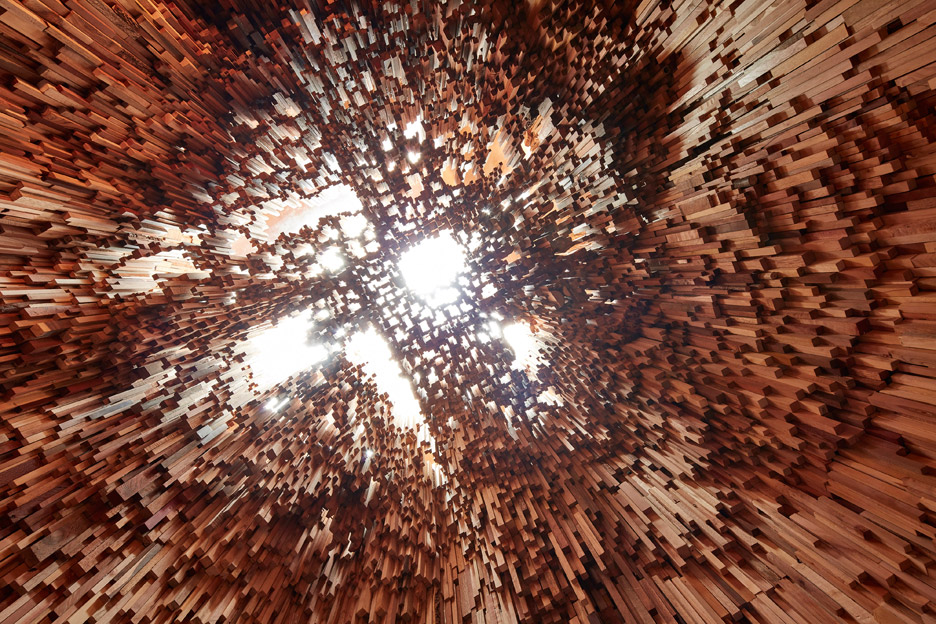
The artwork was commissioned to mark the opening of the University's new Life Sciences building and will be permanently sited in the historic Royal Fort Gardens.
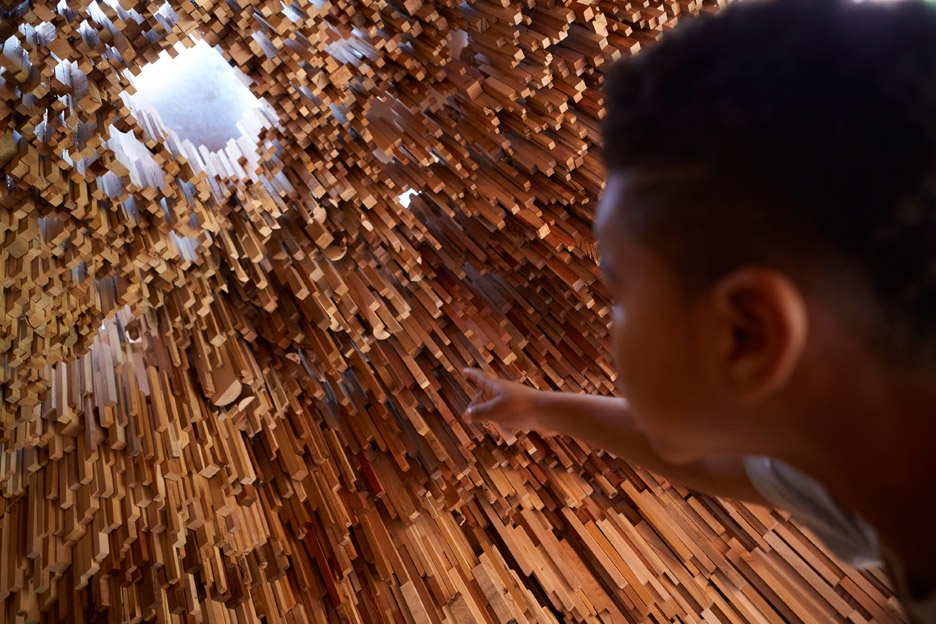
Entitled Hollow, the installation's exterior structure, made of Douglas Fir, is designed as a forest canopy, with the arrangement of posts representing the varying heights of trees.
The installation is accessed via a small opening. Inside, visitors are met with samples of over 10,000 unique tree species – from petrified wood fossils of ancient forests to the most recent emerging species.
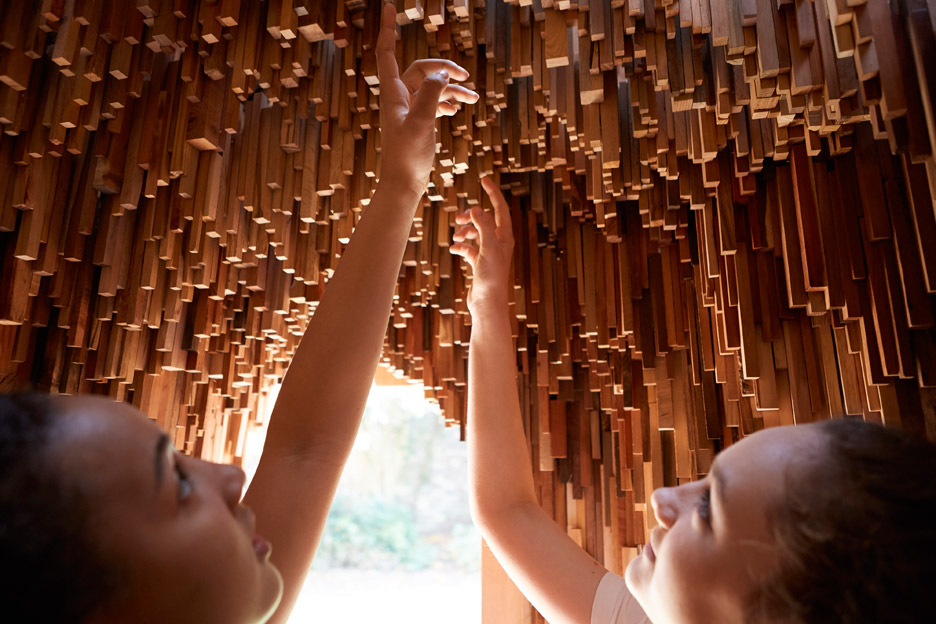
"Some samples are incredibly rare – fossils of unfathomable age, and fantastical trees such as Cedar of Lebanon, the Phoenix Palm and the Methuselah tree, thought to be one of the oldest trees in the world at 4,847 years of age," said Paterson.
"[There's also] a railroad tie taken from the Panama Canal Railway, which claimed the lives of between 5,000 to 10,000 workers over its 50-year construction, and wood salvaged from the remnants of the iconic Atlantic city boardwalk devastated by hurricane Sandy in 2012."
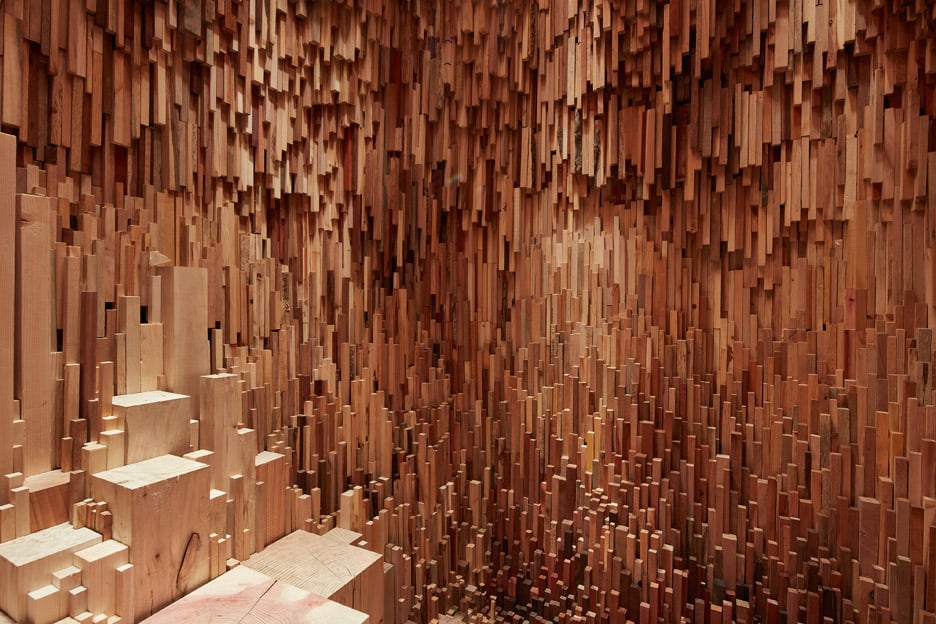
Hollow is the result of a three-year-long research and sourcing project carried out by Paterson, who regularly explores geological issues through her conceptual pieces.
Described as a "miniature forest of all the world's forests", the installation aims to present the history of the planet through the immensity of tree specimens.
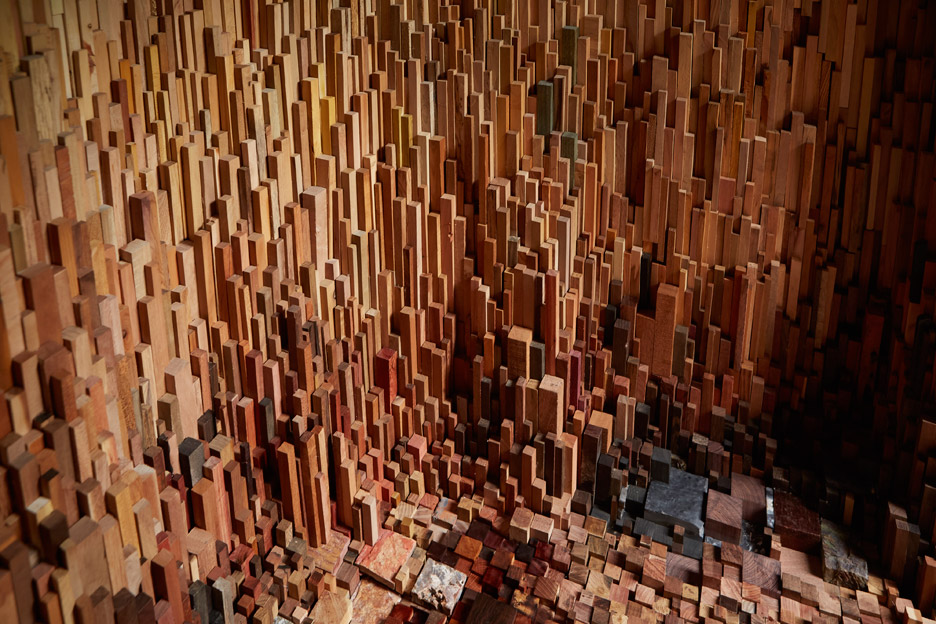
The final collection inside the Hollow installation is, according to Paterson, the largest amassed in the UK to date.
Christoph Zeller and Ingrid Moye, who are the architects involved in the project, described the structure as a "meditative space".
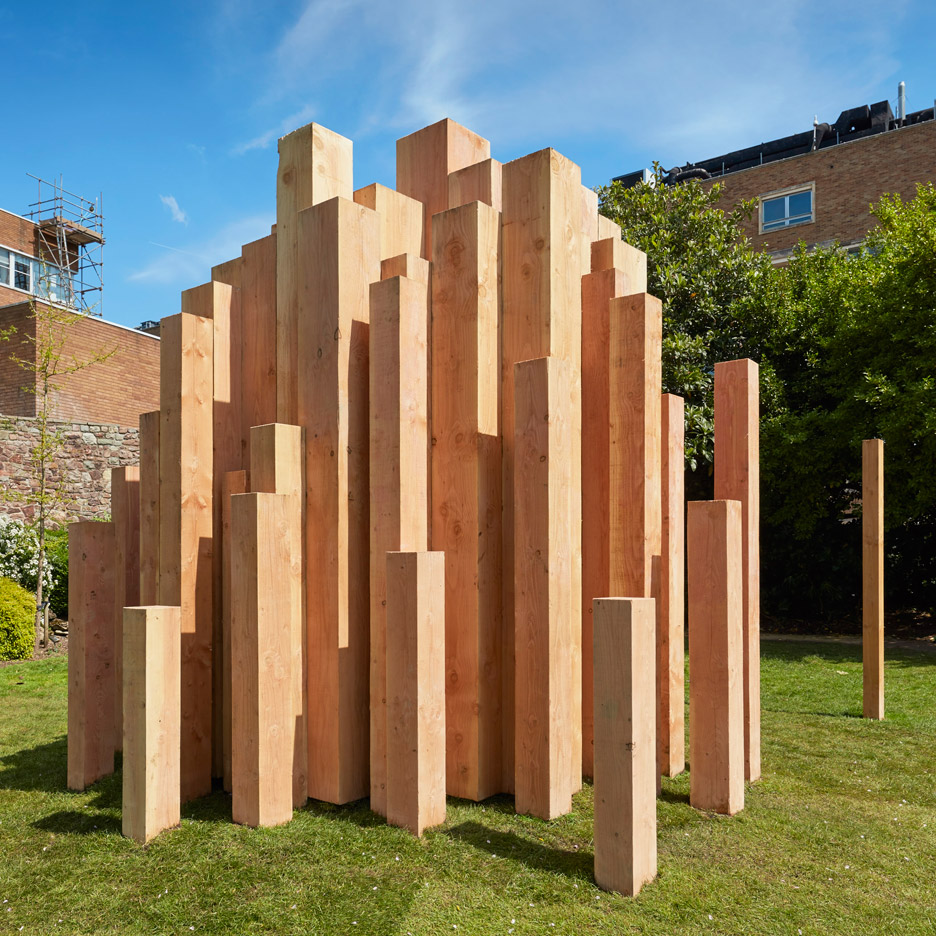
"Our design conjoins thousands of wooden blocks of differing sizes to form one immense cosmos of wood, producing textures, apertures and stalactites," said Zeller and Moye, who also recently converted a former Mexico City residence into a studio and showroom.
"Openings in the vaulted top let in just enough natural light to create the dappled light effect of a forest canopy."
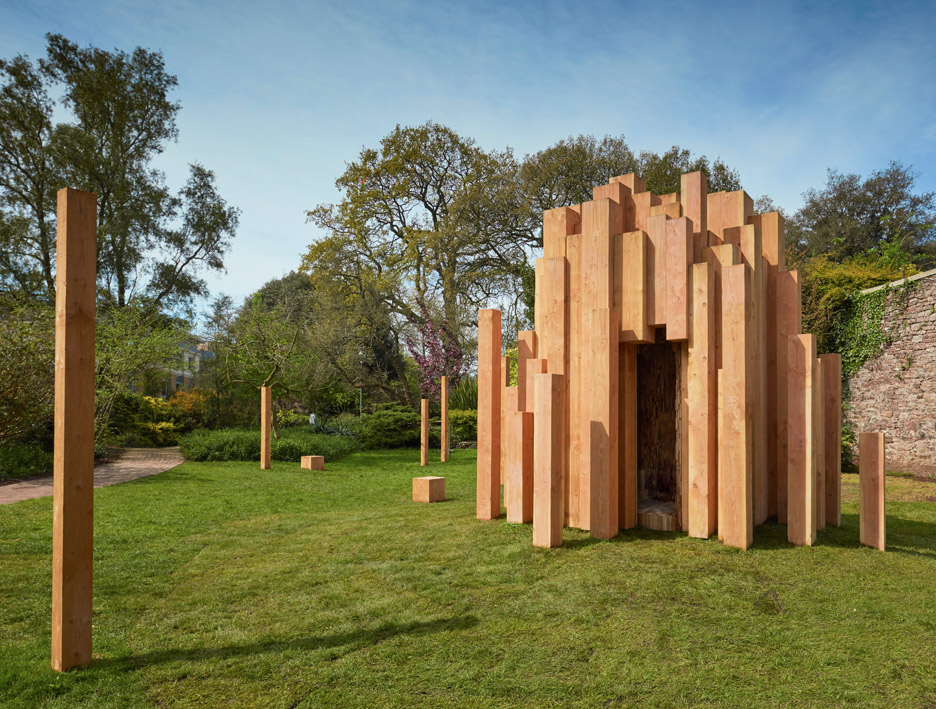
The final installation brings together trees from Japan, California and London. It bears a resemblance to the lobby of a hotel in Canberra, which is lined with thousands of timber planks.
Hollow opened to the public on 9 May and will remain a permanent fixture of the Royal Fort Gardens, although its interior will only open during daylight hours.
Photography is by Max McClure.